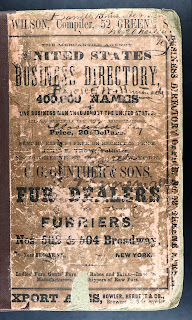I *might* remember a long drive from New York to Ohio to visit my great grandparents when I was 5 years old. I *might* have a single image in my mind of great grandma's kitchen. But that's it.
Before I began researching my family tree, I knew next-to-nothing about my great grandfather Pasquale Iamarino—or Patsy Marino, as he was known. He lived in Ohio and worked for the railroad. Nothing more.
Genealogists enjoy piecing together our ancestors' paper trails and
mapping out their locations. If we're lucky, we can wind up with enough facts to bring our ancestors back to life in a way.
Italian church records from the 1880s told me that Patsy and my other paternal great grandfather were 2nd cousins. A
ship manifest told me that Patsy came to America at age 20, heading first to his uncle in New York City.
Four years later, in 1906, he was working for the Erie Railroad in Steuben County, New York. In the rail yard he must have met the Caruso brothers who came from a neighboring town in Italy.
By late 1906 he married the only sister in the Caruso family, in Hornellsville, New York. Hornellsville was a boom town at that time, achieving city status that year, thanks to the railroad.
When my grandmother Lucy was born in 1908, Patsy and his little family lived at 95 Front Street—a short walk from the railroad station. (I paced up and down in front of that house on a visit in 2015.)
 |
| I stood beside this rail yard in Hornell, New York, in 2015, imagining my great grandfather's life. |
Between 1910 and 1914 Patsy moved to Albany and continued working as a railroad laborer.
He was a boilermaker for the Erie Railroad, working in the railroad roundhouse, according to the
1920 and 1930 census.
City directories show him on Dearborn Street in Girard, Ohio in the early 1930s. This is the house I feel as if I remember.
By 1940, at the age of 58, Patsy retired. I'm closing in on 58 and wish I could retire! But my dad recently told me that Patsy had to retire because of lung issues. Did all those years cleaning out coal-burning engines give him something like black lung disease?
 |
| My great grandparents, before I was born. |
According to the
International Brotherhood of Boilermakers, "Railroad Boilermakers service and repair locomotives, and manufacture parts, including hundreds of items used every day in the railroad industry. They also perform welding on tracks and general maintenance work."
With today's worker safety rules, a boilermaker probably isn't at any risk of lung disease. But something incapacitated Patsy in his fifties. He lived to be 87 years old, enjoying free rail travel.
During his long retirement, Patsy enjoyed tending to his garden and his roses at the house on Dearborn Street. I wish I could remember him.






















